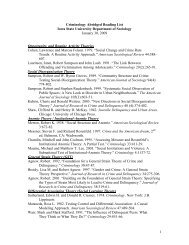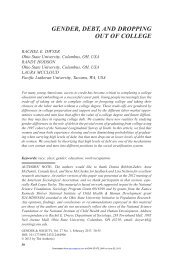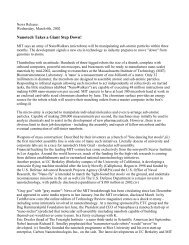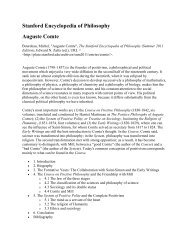Visual Merchandising - North Central Regional Center for Rural ...
Visual Merchandising - North Central Regional Center for Rural ...
Visual Merchandising - North Central Regional Center for Rural ...
Create successful ePaper yourself
Turn your PDF publications into a flip-book with our unique Google optimized e-Paper software.
There are no absolute rules <strong>for</strong> choosing and<br />
combining colors, only flexible guidelines. Imagination<br />
and experimentation will find color schemes that lend to<br />
the atmosphere and attract customers. The type of<br />
merchandise featured, such as hardware, jewelry,<br />
clothing, etc., will have an effect on the type of color<br />
schemes that can be used and the extent to which they<br />
can be used.<br />
Monochromatic Scheme<br />
A single color on the color wheel is used with three to<br />
five tints and shades of that single true color in this<br />
scheme. Several pieces of blue merchandise each<br />
consisting of a different value ranging from baby blue to<br />
navy blue, is an example of a monochromatic color<br />
scheme.<br />
25<br />
Analogous Scheme<br />
Any three or four consecutive colors on a color wheel<br />
creates an analogous scheme. This can be used to create<br />
a soft and subtle decor and warm or cool effect. This<br />
color scheme needs to be used with caution so as not to<br />
end up with an overstimulating nor depressing<br />
atmosphere. Examples of analogous schemes could be<br />
yellow, yellow-green, green and blue-green, or blue, bluegreen<br />
and green.<br />
Triadic Scheme<br />
Every fourth color on the color wheel <strong>for</strong> a total of<br />
three colors make a triadic color scheme. This is a good<br />
combination of colors that can create the muted, traditional<br />
look as well as more vibrant color characteristics of<br />
modern color schemes. An example could be red, blue<br />
and yellow.<br />
Complementary Scheme<br />
A complementary color scheme is represented by two<br />
colors that are exactly opposite one another on the color<br />
wheel, such as green and red or yellow and purple. It can<br />
result in a very pleasing combination of warm and cool<br />
colors. Avoid using opposite colors in equal amounts of<br />
light and dark combinations.<br />
Split Complementary Scheme<br />
Three colors <strong>for</strong>ming a Y on the color wheel consists of<br />
a base color and one color on each side of the base color’s<br />
“Common color<br />
schemes include:<br />
• monochromatic<br />
• analogous<br />
• triadic<br />
• complementary<br />
split<br />
• double<br />
complementary<br />
• tone on tone.”<br />
<strong>Visual</strong> <strong>Merchandising</strong><br />
NCRCRD, 1991

















